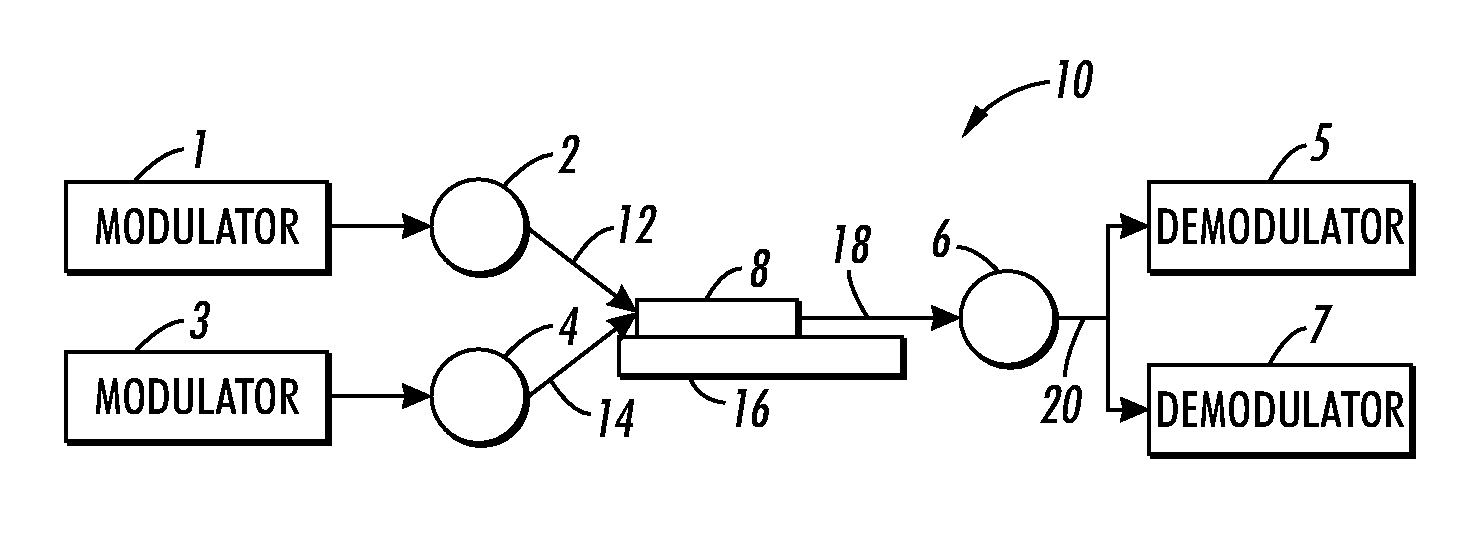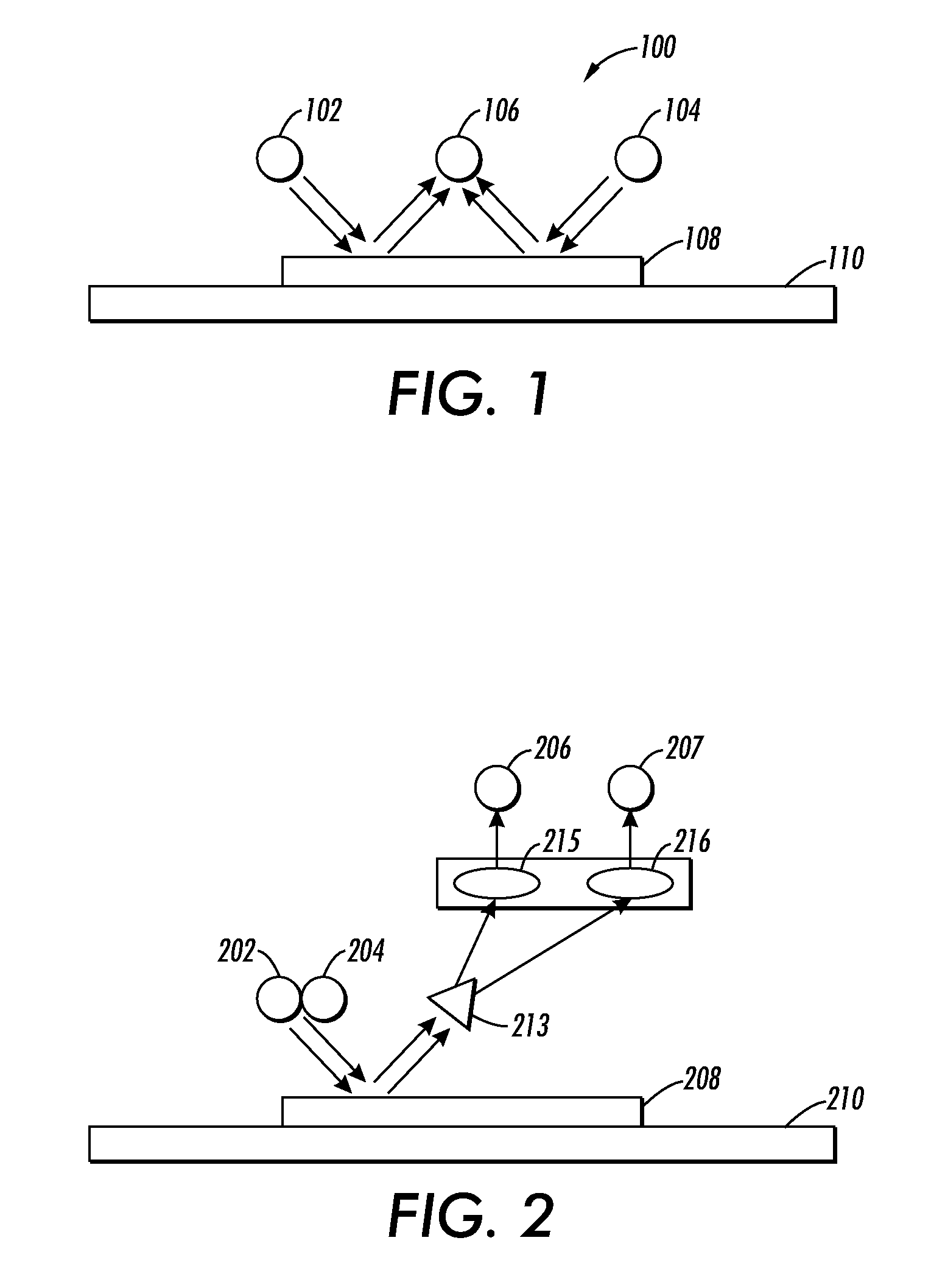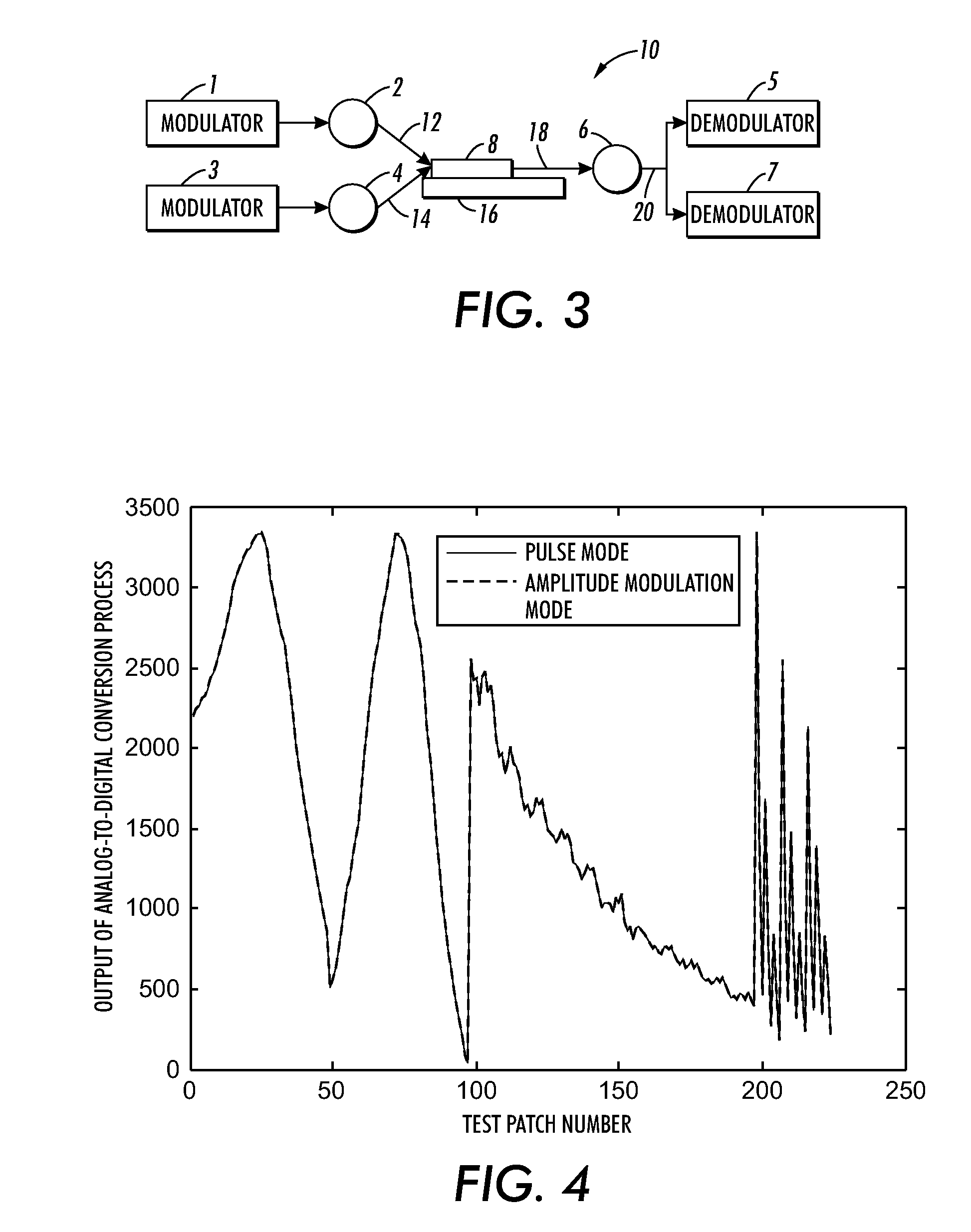Amplitude modulation of illuminators in sensing applications in printing system
a technology of illuminators and sensing systems, applied in the direction of electrographic processes, instruments, corona discharge, etc., can solve the problems of more complex and costly sensing systems, more time-consuming sequential sampling types, and large amount of wasted documents for sensing
- Summary
- Abstract
- Description
- Claims
- Application Information
AI Technical Summary
Benefits of technology
Problems solved by technology
Method used
Image
Examples
examples
[0078]The sensing technique described in the present disclosure, and the resultant gains in sampling time and / or reductions in required test patch sizes, are useful in many printing related sensing applications.
[0079]One example is a Xerox® low cost LED (LCLED) spectrophotometer. As noted above, the Xerox® LED spectrophotometer is a multiple illuminator sensing system that requires sampling of the test patch response to eight different LEDs. Currently, the sampling is performed by pulsing eight individual LEDs on one at a time and measuring the response with a single sensor, as discussed in the background section. The present disclosure instead enables sampling of the response of the test patch to all eight LEDs in a single sampling instant without adding significant additional costs to the design. Therefore, the present disclosure may provide up to a factor of eight improvement in the sampling time for this multiple illuminator sensing system. This means that an approximately 240 p...
PUM
 Login to View More
Login to View More Abstract
Description
Claims
Application Information
 Login to View More
Login to View More - R&D
- Intellectual Property
- Life Sciences
- Materials
- Tech Scout
- Unparalleled Data Quality
- Higher Quality Content
- 60% Fewer Hallucinations
Browse by: Latest US Patents, China's latest patents, Technical Efficacy Thesaurus, Application Domain, Technology Topic, Popular Technical Reports.
© 2025 PatSnap. All rights reserved.Legal|Privacy policy|Modern Slavery Act Transparency Statement|Sitemap|About US| Contact US: help@patsnap.com



